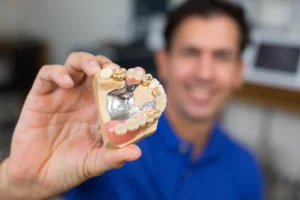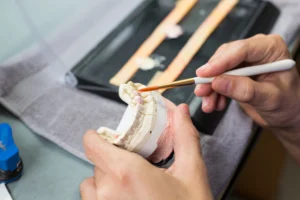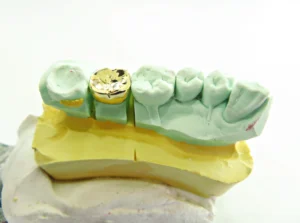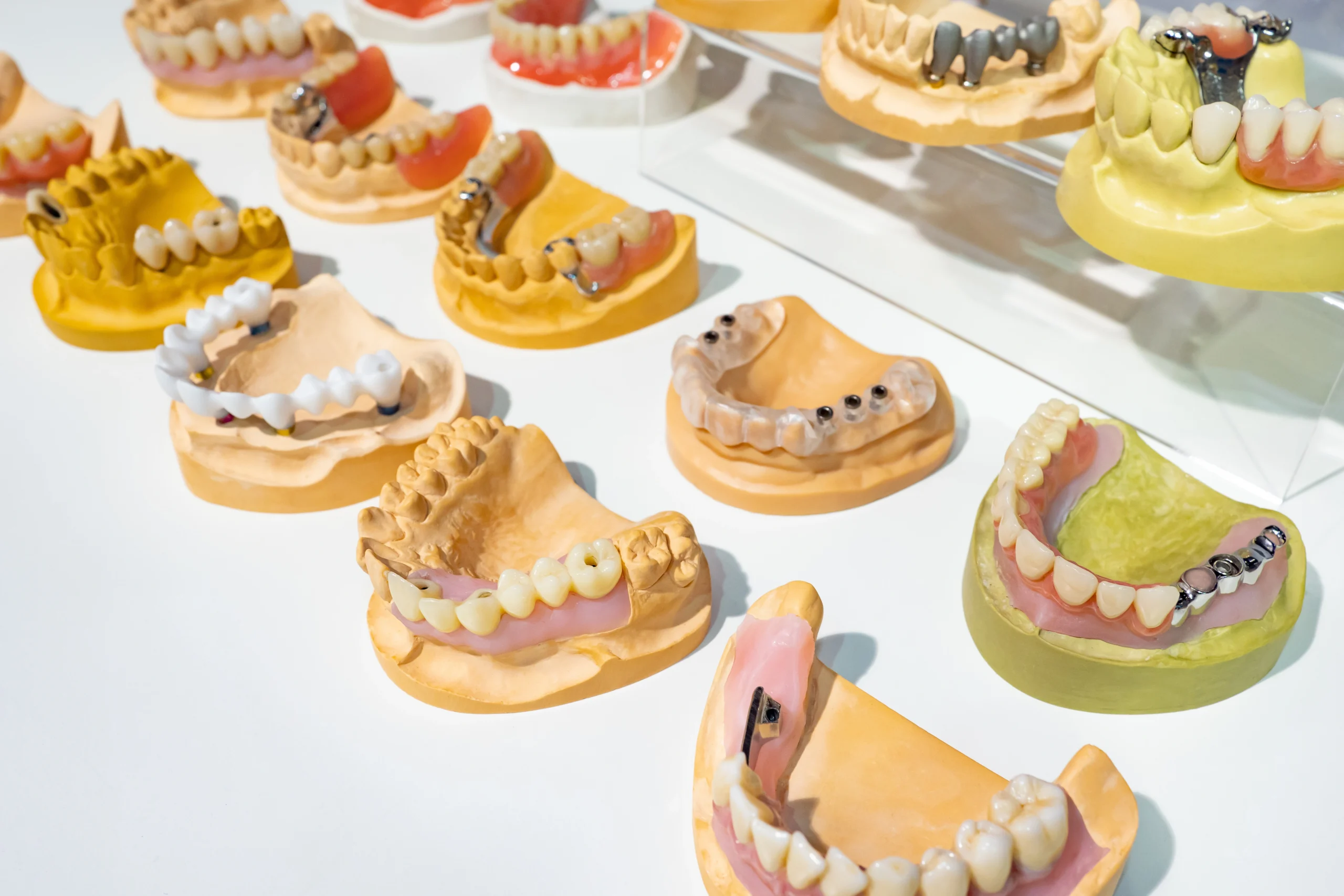The concept of dental crowns dates all the way back to the ancient Romans, and using crowns for tooth repair remains one of the most common dental procedures today. In fact, single crown placement is the most common restorative procedure performed by dentists in the United States! Dental crowns have many uses, such as restoring the shape, size, strength and/or appearance of a tooth. Crowns can support dental bridges, repair broken teeth, and protect weak or damaged teeth – especially after procedures like root canals.
Dental technology has made tremendous advancements over the years. Many of the crowns used today are precisely customized in shape, size and color to blend in with the rest of the teeth, creating a completely natural-looking smile. Some dental crowns are true works of art with intricate details.
Different Types of Dental Crowns
So, what are tooth crowns made of? Historically, dental crowns were predominantly made of gold. Gold’s durability, malleability and biocompatibility make it a great material for dental use!
Today, a much wider variety of materials are used to make dental crowns, each with their own pros and cons. All-metal and PFM (porcelain-fused-to-metal) crowns offer superior strength and durability. Gold is often alloyed with other precious metals such as palladium, silver and platinum to create long-lasting dental crowns.

On the other hand, materials like porcelain, resin, zirconia and e-max provide a more natural look. For this reason, selecting the right type of crown for a patient depends on where it will be located in their mouth. More natural-looking crowns are usually preferred for front teeth with high visibility, whereas metal crowns are often used for the back teeth that require good strength for chewing.
You may be wondering, what exactly does a tooth crown look like? This depends on the material. Metal crowns can be gold or silver in color, while the more natural-looking options very closely resemble real teeth.
How Are Dental Crowns Made?
Crafting a dental crown requires a high level of skill and attention to detail. Dentists and dental technicians work in tandem to create custom crowns that match the shape, size and color of a patient’s natural teeth. Many crown installations are so well-done that they result in a seamless smile restoration!

Creating a dental crown requires four basic components: molds of the patient’s teeth, the crown itself, adhesives to secure the crown in place, and a finishing coat to help make the crown look natural.
Impressions
Before creating a mold, the dentist may need to remove a few millimeters from around the outside of the tooth. Then an impression of the tooth is taken to register its exact shape. This is essentially a reverse image of the tooth.
Casting
Using the impression, a new mold of the patient’s oral cavity is created using model plaster. Model plaster is mixed with water and then poured into the impression mold. This creates a positive model of the tooth, called a cast. The dentist can use the cast to study the shape of the tooth.
After the cast is complete, one more mold is created using the original tooth impression – an investment mold. The investment mold will be used to shape the final crown product. It’s designed to withstand high temperatures, as some metals and ceramics need to be heated in order to shape the crown.
Fabrication
Now it’s time to fabricate the crown. First the investment mold is treated with a release agent, so that the crown doesn’t get stuck inside the mold once it’s formed. Next, the investment mold is filled with the crown material of choice. This may be done at a high temperature, or heat may be added later on to allow the crown to harden. Once the crown is cured and cooled, it can be removed from the investment mold! Finishing touches and fine details can now be added by hand if necessary.

Installation & Finishing Touches
To install the crown, cement is applied inside of its surface before it’s fitted into place over the tooth. Some minor grinding and smoothing may be required to ensure the best fit. Last but not least, a finishing coat may be added to make the crown appear natural. This step may involve adding subtle shading and translucency to mimic the appearance of natural enamel.
How Long Does a Tooth Crown Last?
Generally speaking, the average lifespan of a tooth crown is about 10-15 years. With good dental hygiene and regular check-ups, some can last for decades. The longevity of a dental crown will ultimately depend on what it’s made of, the health of the tooth that it’s covering, and the oral hygiene of the patient.
For example, with sufficient care and good oral hygiene, a zirconia crown can last 10-15 years or more. PFM (porcelain fused to metal) crowns last about 5-15 years on average. And crowns made of gold and palladium can last anywhere from 10 to 30 years with proper care!
Potential Value
Did you know that many dental crowns contain valuable precious metals like gold, silver, platinum, and palladium? Depending on the alloy (mixture of metals), some metal crowns hold significant value. And with the price of gold at record-breaking highs ($2,280 per ounce as of April 2024), now is a better time than ever to cash in on a dental crown that contains gold.
If you ever end up with a precious metal dental crown on your hands, you can monetize it by sending it in to Garfield Refining. Garfield accepts all dental scrap, including crowns, bridges, PFMs, inlays and onlays, partial dentures and dental implants. If you’re looking to reduce waste and capitalize on your dental scrap, refining with Garfield is the way to go!
If you’re looking to sell gold dental crowns, we’re here to help. Start your shipment today!
Stay tuned to our blog for more insights on precious metals! Check out other fun articles like 3 Fun Facts About Gold, 3 Fun Facts About Silver, and The Major Factors That Drive the Gold Price.
Established in 1892, Garfield will get you the most for your gold, silver, platinum, and palladium, and we offer the industry’s best customer service.

